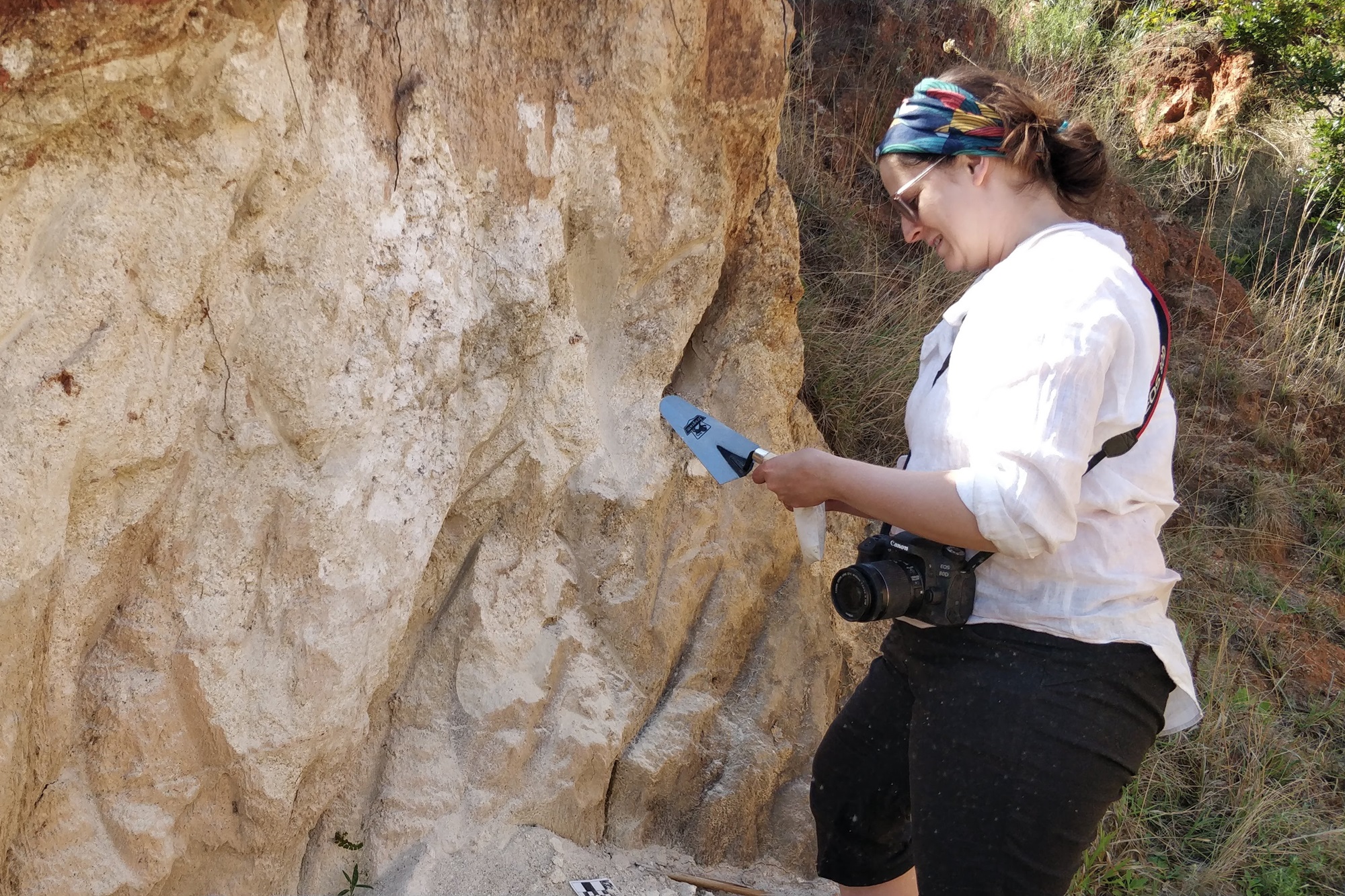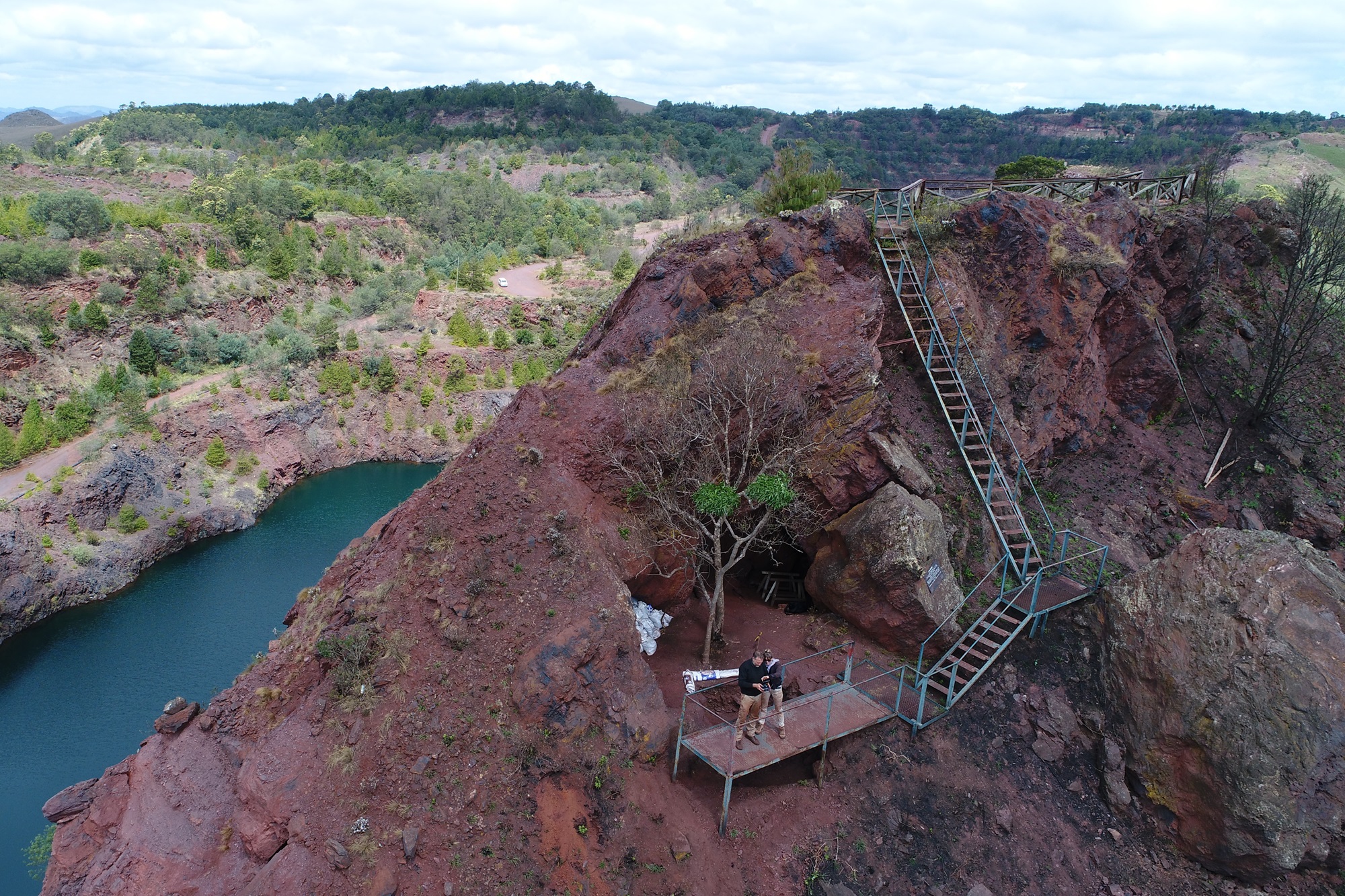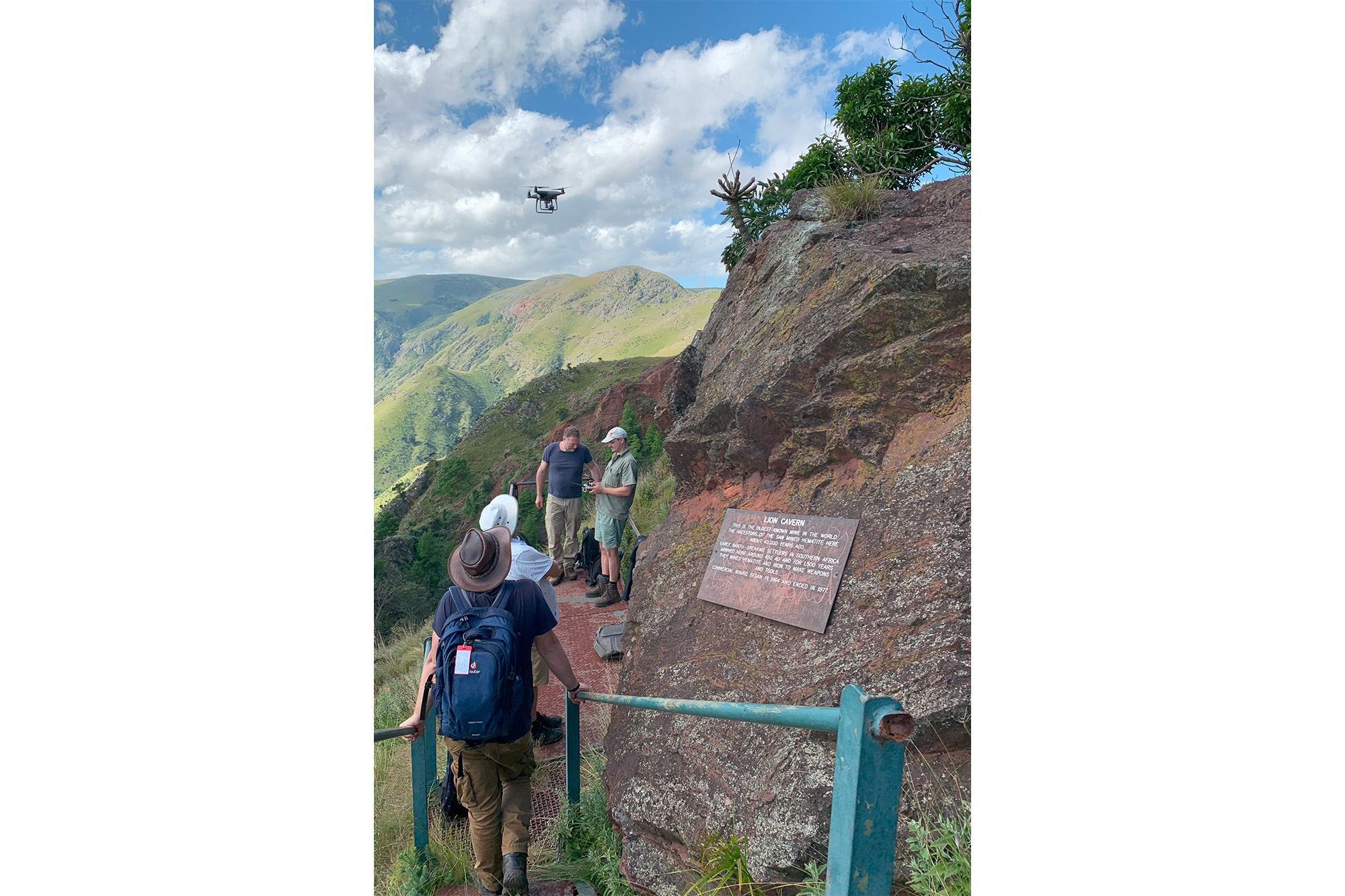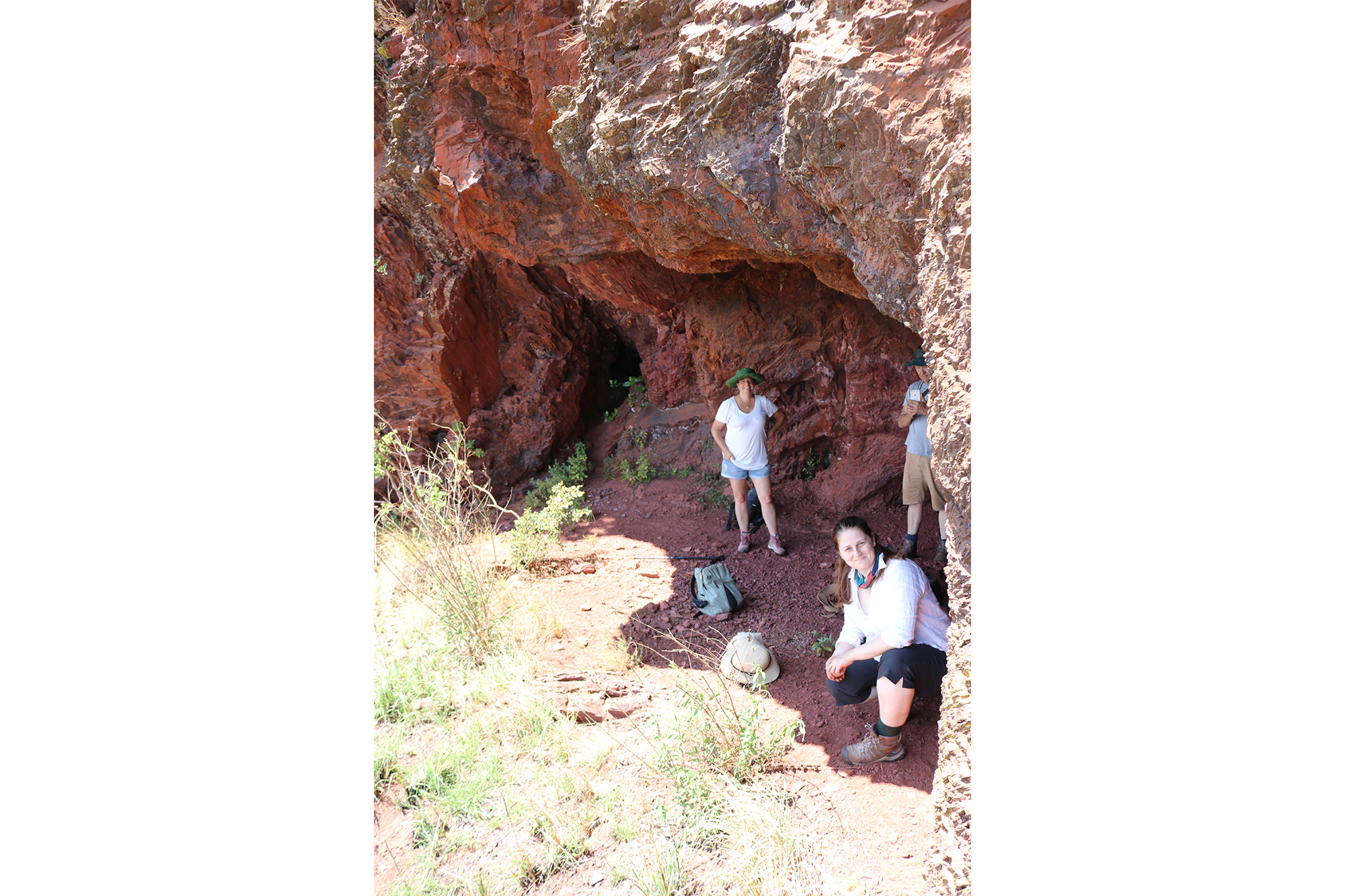By Eric Stann
Oct. 28, 2024
Contact: Eric Stann, 573-882-3346, StannE@missouri.edu
Photos courtesy Brandi L. MacDonald, Gregor Bader and Jörg Linstädter
University of Missouri scientist Brandi L. MacDonald is using modern technology only found at Mizzou to help researchers expand the collective understanding of how human thought and intellect has developed over time.
In a recent study, an international team of scientists partnered with MacDonald to access advanced scientific technology at the University of Missouri Research Reactor (MURR), Materials Science and Engineering Institute (MSEI) and Electron Microscopy Core (EMC). Using Mizzou’s resources and expertise, the team, led by MacDonald, was able to confirm the location of the world’s oldest ochre mine and trace how ochre from the mine was dispersed to nearby communities.
Ochre is naturally occurring pigment that comes from iron-rich materials. As one of Earth’s oldest materials, it has been used by people for thousands of years. Known as a pigment for cave paintings, and decoration of symbolic objects and personal ornamentation, it holds cultural, historical and spiritual significance in many societies. Its enduring presence offers scientists valuable insights into the growth of human society and self-expression.
Discovering a material’s origins
Provenance is a method in archaeology used to trace an object’s history or origin, and it’s the focus of MacDonald’s expertise at MURR’s Archaeometry Lab. There, she and her fellow scientists use neutron activation analysis, a technique that reveals the chemical composition of artifacts. Then, comparisons can be made with existing data to establish provenance.
Because the Archaeometry Lab is connected to the country’s most powerful university research reactor and is staffed with specialists who understand how to apply the techniques to this specific research area, it’s one of only a few facilities available worldwide where this research can take place — and the only one of its kind in the United States.
This complex and highly scientific process creates a unique geochemical fingerprint that can reveal the material’s origin, how it was formed and its history. In this study, that material was ochre sampled from Lion Cavern and surrounding communities in Eswatini, a country in southern Africa.
“We take small samples of ochre artifacts and safely make them radioactive by exposing them to neutrons inside the reactor core,” said MacDonald, a chemistry professor in the College of Arts and Science with a joint appointment at MURR’s Archaeometry Lab. “As these radioactive materials start to break down or decay, they emit characteristic energies in the form of radioisotopes — which we can measure using gamma ray spectrometry.”
Developing a detailed picture of history
Creating the geochemical fingerprint at MURR was just the first step of this project. Additional cutting-edge tools found at MSEI and EMC helped researchers uncover a more complete history of how ochre was mined and used in this part of Africa.
Researchers used advanced laser technology at MSEI — Raman spectroscopy — to reveal the unique makeup of the ochre samples. The laser makes the sample’s molecular bonds vibrate, and by measuring the energy from this vibration, they could identify the existence of specific minerals inside the ochre.
Meanwhile at the EMC, the scientists were able to zoom in on samples of ochre with powerful imaging tools — including a scanning electron microscope — to get a closer look at the material’s chemical structure and elemental composition under high magnification. This high-tech exploration allowed researchers to take a deep dive into the composition and properties of ochre samples, uncovering new insights that connect the past to the present.
Together, these innovative techniques helped uncover the hidden secrets of ancient ochre. By using modern science to analyze ancient history, they’re piecing together a vivid picture of the past, highlighting Mizzou’s role as a leader in innovative and transformative research.
Future exploration
MacDonald’s work on ochre recently earned her a National Science Foundation (NSF) CAREER Faculty Early Career Development Award — one of the NSF’s most prestigious awards in support of early-career faculty — to expand her research in Eswatini and to support similar research in northern Australia. Her future work could reshape our understanding of ochre’s role throughout human history.
“By comparing the ochre sources with the places where people lived, exchanged and used those ochres between 2,000 and 40,000 years ago, we can see how their choice of raw materials changed over long periods of time,” MacDonald said. “This allows us to anchor human activities in time and show how human cognition and social networks developed alongside those activities. Understanding how these people mined, processed, transported and used ochre provides clues about early technological innovations and helps trace the history of human creativity and symbolism.”
“Ochre communities of practice in Stone Age Eswatini” was published in Nature Communications. Co-authors are Elizabeth Velliky at the University of Bergen, Norway; Bob Forrester at the Swazi Archaeological Research Association and Eswatini National Museum; Gregor Bader and Ayanda Mabuza at the University of Tubingen; Svenja Riedesel at the University of Cologne and Technical University of Denmark; Jörg Linstädter at the German Archaeological Institute; Stephan Woodborne at Themba LABS; and Alexandra Kuo at MURR.
Editor’s note
Ochre is pronounced “Oh-kr.”







